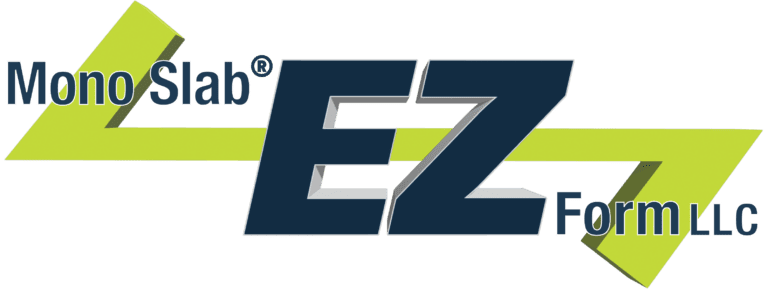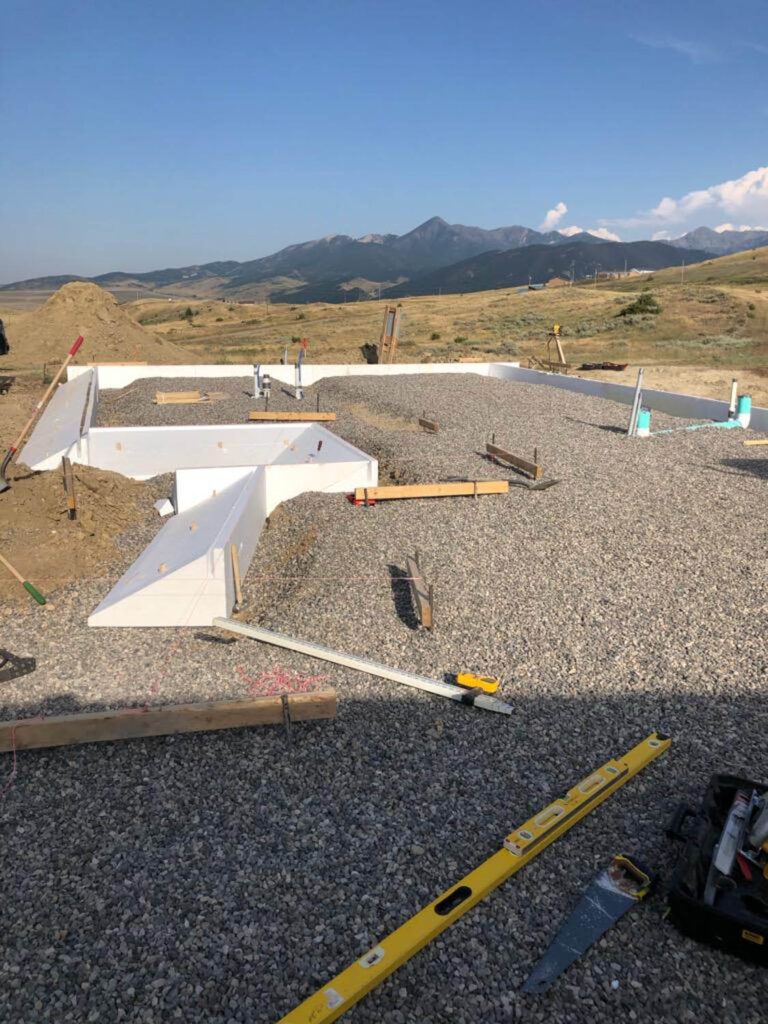Mono Slab® EZ Form: Science-Backed Innovation for Code-Compliant Foundations
Building a strong, cost-effective, and code-compliant foundation has long been one of the most challenging and expensive aspects of construction in cold climates. Mono Slab® EZ Form changes that by combining proven engineering science with user-friendly design to create a foundation system that saves time, money, and labor—while meeting or exceeding building code requirements.
What Is a Frost Protected Shallow Foundation (FPSF)?
In regions where winter frost penetrates deep into the soil, traditional foundations often require excavation well below the frost line to avoid frost heave. The Revised Builder’s Guide to Frost Protected Shallow Foundations, developed by the U.S. Department of Housing and Urban Development (HUD) and the National Association of Home Builders (NAHB), provides the science and engineering behind a smarter approach.
An FPSF uses strategically placed rigid insulation to capture natural geothermal heat and controlled heat loss from the building, keeping soil temperatures stable. This allows footings as shallow as 12–16 inches in most of the continental U.S. The method is not experimental—it is recognized in the International Residential Code (IRC), and International Building Code (IBC) through reference to ASCE 32-01, giving builders a prescriptive, code-approved path to frost protection.
How Mono Slab® EZ Form Brings FPSF Science to the Jobsite
Mono Slab® EZ Form is more than just a concrete form—it’s an integrated patented insulated forming system that simplifies FPSF construction:
- Built-In Insulation – Mono Slab® patented design incorporates ASTM C578–compliant EPS foam insulation, providing the R-values required to prevent frost heave and meet building and energy codes.
- One-Pour Construction – Builders can create the footing and slab in a single monolithic pour, reducing labor, inspections, and potential cold joints.
- Code Compliance Made Simple – By following the insulation R-values and footing depths outlined in the HUD/NAHB design tables, Mono Slab® aligns directly with IRC and ASCE 32-01 standards for frost protection and energy efficiency.
The Science Behind the Savings
According to HUD research, insulation around the perimeter of a foundation redirects and stores heat in the ground, raising the frost depth and preventing soil movement. Mono Slab® patented design captures this science in a pre-engineered product, ensuring that critical details—such as vertical and horizontal insulation placement, thermal resistance, and drainage—are built right into the formwork.
- Lower Excavation Costs – Because the foundation can be as shallow as 12–16 inches, builders move less soil and require smaller equipment.
- Faster Schedules – A single concrete pour means fewer trips, fewer inspections, and faster turnaround.
- Energy Efficiency – Insulation levels designed for FPSF not only protect against frost but also improve slab surface temperatures, reducing condensation and improving comfort.
Proven in the Field
The FPSF approach has been validated through decades of performance testing in Europe and the U.S.—including monitored homes in Vermont, Iowa, North Dakota, and Alaska—that demonstrated frost-free results even in extreme climates. Mono Slab® EZ Form packages proven technology into a practical system any concrete crew can install with minimal learning curve.
Build Smarter, Build Stronger
Mono Slab® EZ Form patented products and design, gives builders a science-backed, code-approved path to stronger, faster, and more energy-efficient foundations. Whether you’re constructing a new home or a light commercial project, you can trust that your foundation is grounded in the latest building science and built to last.
Key Sources
- U.S. Department of Housing and Urban Development. Revised Builder’s Guide to Frost Protected Shallow Foundations (NAHB Research Center, 2004).
- American Society of Civil Engineers. Design and Construction of Frost-Protected Shallow Foundations, SEI/ASCE 32-01.
ASTM C578. Standard Specification for Rigid, Cellular Polystyrene Thermal Insulation.

